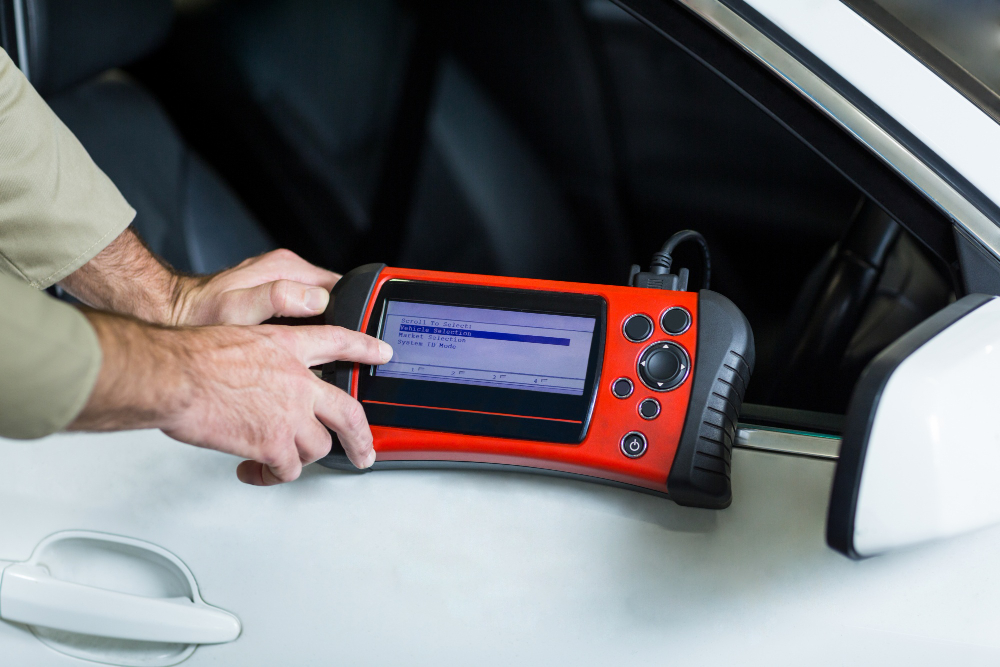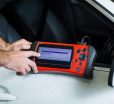What Are The Subtle Signs Your Vehicle Tech Is Misaligned?

Table Of Contents
Modern vehicles are packed with technology designed to keep you safer on the road.
In fact, from lane-keeping sensors to adaptive cruise control and collision-avoidance systems, everything has a purpose.
These features rely on an intricate network of cameras.
Additionally, it also depends on radar units and sensors. So, these must all be precisely aligned to function properly.
It’s one of the reasons drivers often turn to ADAS calibration specialists when something feels “off,” even if there’s no obvious mechanical issue.
The tricky part? Tech misalignment rarely announces itself loudly. Instead, it shows up in subtle, easily overlooked ways.
Suppose you’ve ever had a moment where your car’s vehicle sensor alignment was disrupted.
This means that it seemed to behave differently than usual, or a safety feature hesitated when you needed it most. In that case, that might be the early whisper of misalignment.
Why Vehicle Sensor Alignment Matters More Than You Think?
Advanced driver assistance systems (ADAS) operate with precision. Even a few millimetres of misalignment can throw off readings.
Additionally, it can slow the system’s ability to respond. Something as simple as hitting a pothole can prove to be dangerous.
Also, if you are replacing a windscreen, or even if it’s due to regular wear and tear, sensor positioning can shift.
These systems support everyday driving by:
- Detecting obstacles
- Monitoring lane position
- Applying emergency braking
- Managing a safe distance from other cars
- Guiding parking or reversing
When alignment is off, the system’s “vision” becomes blurred — and that affects you long before warning lights appear.
What Are The Signs You Need To Fix Your Vehicle Sensor Alignment?
Either you learn about these signs to protect your vehicle’s sensor alignment, or you might have to face sudden repercussions. It’s better to go with the former, isn’t it?
1. Your Car Feels Like It’s Reacting Slower Than Usual
One of the earliest signs of misaligned vehicle tech is a delayed response. Maybe your forward-collision alert takes an extra moment to beep, or adaptive cruise control doesn’t adjust your speed as smoothly.
Small changes that suggest a problem include:
- Alerts activating later or less frequently
- Adaptive cruise reacting slowly to changing traffic
- Sensors detecting vehicles inconsistently
- A general “laggy” feeling in safety features
It might not be dramatic, but your car should never feel unsure.
2. Your Lane-Keeping System Can’t Seem To Hold Its Line
Lane-keeping assistance is highly sensitive to calibration. If sensors or cameras are slightly off, the system might struggle to recognise lane markings or may pull unevenly.
Watch for signs like:
- The system is drifting slightly rather than centring you
- Warnings appear even when you’re clearly in your lane
- Gentle pulling to one side
- Lane-keeping disengages more often
If the system doesn’t feel smooth and confident, it’s worth paying attention.
3. Your Parking Sensors Act “Jumpy” Or Inconsistent
Parking sensors are a perfect example of where small misalignments turn into everyday frustrations.
Even the slightest shift in angle can cause incorrect distance readings.
You may notice:
- Beeps sound earlier or later than they should
- The system is reacting to “phantom” objects
- Sudden bursts of warning tones when nothing is close
- Blind spots where the sensors don’t register anything
These inconsistencies can sneak up slowly, making them easy to dismiss.
4. The Steering Assist Feels Heavier Or Lighter Than Normal
If your vehicle uses steering assist or automatic steering correction, any misalignment in its supporting sensors can show up in how the wheel feels.
You might sense:
- Minor resistance during turns
- Your steering feeling lighter than usual
- Odd corrections when the road looks straight
- Subtle vibrations or hesitation
Changes in steering feel are often your car’s first attempt at telling you something is off.
5. Your Car Feels More Sensitive To Bumps And Vibrations
When sensors shift — even slightly — your car becomes more reactive to uneven surfaces. Hitting a pothole, speed bump, or dip in the road may cause features to disengage or recalibrate momentarily.
You may experience:
- Sudden sensor warnings after rough roads
- Brief system interruptions
- Alerts activating when you hit dips or bumps
- Temporary “system unavailable” messages
If rough roads create unpredictable tech behaviour, alignment may be the issue.
6. The Warning Lights Haven’t Appeared… Yet
One of the trickiest aspects of Advanced Driver Assistance Systems (ADAS) is that warning lights can sometimes appear too late.
These systems are designed to self-correct before they even let you know there’s a problem.
Because of this, misalignment can compromise your safety long before that dashboard light comes on.
That’s why it’s very important to pay attention to any subtle changes in how your vehicle behaves.
By being observant and noticing these shifts early, you can take action to ensure your safety and that of others on the road. Stay proactive; it could make all the difference.
What Causes Problems In Vehicle Sensor Alignment in the First Place?
It doesn’t always take an accident or major repair for ADAS misalignment to happen. Everyday events can disrupt sensor accuracy.
Common triggers include:
- Replacing or repairing a windscreen
- Changing or adjusting tyres
- Front-end repairs
- Minor bumps while parking
- Hitting potholes, kerbs, or road debris
- Adjusting suspension components
- Regular wear and tear over time
Because these systems rely on pinpoint accuracy, even minor shifts matter.
When To Take Action?
If your car’s tech feels different — even slightly — it’s a good idea to get it checked. Misalignment won’t fix itself, and small inaccuracies can escalate into major safety issues.
Look for help if you notice:
- Inconsistent alerts
- Systems switching on and off
- Steering that feels unfamiliar
- Sensors are giving unreliable readings
- Safety features behaving unpredictably
A professional calibration restores accuracy and ensures your car’s systems respond exactly when they should.
The Importance Of Vehicle Sensor Alignment Explained
Your vehicle’s technology is there to support and protect you, making your daily driving experience a little less stressful.
However, all these features need to work together seamlessly. Paying attention to the subtle changes in how your car behaves can help you identify any misalignments early on, ensuring it runs smoothly.
Sometimes, it’s those quiet signs that can tell you the most about what’s really going on under the hood.
Keeping an eye on these small details can make a big difference in how your car performs.
You May Also Like

August 29, 2025
How Modern Criminal Investigations Are Carried Out

August 19, 2025
Addiction Recovery: What Real Healing Actually Looks Like?

October 31, 2025





















